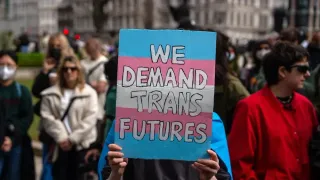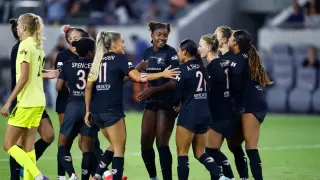August 9, 2022
Reviews: 'A Run for More' and 'The Art of Love' are Uncommon LGBT Films
Laura Moreno READ TIME: 5 MIN.
Although they are vastly different films, both "A Run for More" and "The Art of Love" dare to venture off the beaten path, pulling back the curtain on their subject matter. One film documents the unlikely political campaign of the first transgender candidate in Texas, and the other is the unlikely love story between an older man and a self-professed lesbian.
Both films exemplify extraordinarily good filmmaking, beautiful cinematography, and emotionally rich musical scores. And both films crescendo to memorable endings.
Notably, a major star of each film ends up being the beautiful city in which it was filmed. No doubt, San Antonio, Texas and San Juan, Puerto Rico seem to have been built for to be featured in cinema.
The Art of Love
In many ways, "The Art of Love," starring Esai Morales and Kunjue Li, is an old-fashioned love story with a new twist. Set in 1994, just a generation ago, this beautiful love story feels emotionally "clumsy" to younger audiences who may be more jaded about affairs of the heart today. But there is something wondrous about seeing a man fall so completely head over heels in love on-screen, as was common an earlier more innocent era (because it is more natural to what the human heart truly wants). Of course, the heart wants the whole package.
Another point of criticism of this film, the primitive 1994 graphics that illustrate his emotional state at various points, to me just shows how far we have come technologically in so short a time. The computer-animated sequences add a lot by quickly conveying information that would be difficult to convey in words, as the animations did in "Hedwig and the Angry Inch." But some audiences may be so affected by style that it actually blinds them to substance, it seems.
These are two alienated souls that find each other for one brief moment. He (the nameless male lead) is alienated from satisfying social relationships, trapped within the ivory tower in his hometown. The film is very good at giving us the feel of the stifling social milieu – neighbors' attentive faces and prying eyes are everywhere as the action plays out. He has never found a satisfying relationship, yet he stays on the island, unwilling or unable to find conditions and social connections that better suit him.
When a Chinese immigrant student and aspiring artist woos him, it's too much to resist. She too is alienated, but she is an outsider even in her own community due to a scandal in her teen years. Indeed, even Li Chao's family is absent except for a predatory cousin. She has been in a long relationship with a female professor, but it seems to be a relationship of convenience. Recall that back in the day, dating and marrying students (adult college students) was considered acceptable, as in the film – a point that is often lost today.
In each other's arms, they both realize that what they share in common is that they do not know how to love. "She was my other half. The impossibility of two bodies that have not learned to recognize themselves in anyone else."
The film is based on the book "Simone" by Eduardo Lalo, adapted for the screen and directed by Betty Kaplan. It is currently playing in select theaters and VOD/Digital.
A Run for More
Amid a torrent of anti-transgender pieces of legislation, Frankie Gonzales-Wolfe courageously sought to become the first openly transgender elected official in Texas when she ran for a seat on the San Antonio City Council.
Gonzales-Wolfe is a seasoned campaign staffer who has worked on more than 50 campaigns, but her ascent has not been easy. The campaign was historic, deep in the heart of the most staunchly gendered, most anti-transgender part of the country. Gonzales-Wolfe endured an endless struggle to replace campaign signs that voters unscrupulously ripped down. Occasionally, people openly insulted her for being transgender, so plans to knock on doors in her district had to be cancelled.
Even her friends in the LGBTQ community felt they could not help her with the campaign, although they very much wanted to, for fear that they would look too transparently trans or too gay and therefore might incur additional wrath from the public. Democracy cannot flourish, to say the least, under such hostile conditions.
Two key trans activists in the film did not survive the pandemic, and one must wonder whether the survival rate within the LGBTQ community (like the Hispanic community, especially in Texas) was lower than the general population.
In 1998, Gonzales-Wolfe was assaulted in a parking lot by three men. She prayed for God's help and amazingly survived the violent attack, and went on to thrive.
The film ends on an exultant note. Although she did not win, she found Frankie. She became the campaign manager of a successful campaign in Bexar County and is now Chief of Staff of County Commissioner Rebeca Clay-Flores. Frankie Gonzales-Wolfe is the only transgender chief of staff in Texas.
In her own eloquently simple words, she summarizes her life since transitioning: "Hello, new me. She's now strong. She's now confident. She is alive. She's in love... I am here. I am her. I am transvisible."
Directed by Ray Whitehouse, executive produced by award-winning documentarian PJ Raval, "A Run for More" will soon be available on Disney+. www.arunformore.com
Help keep the Bay Area Reporter going in these tough times. To support local, independent, LGBTQ journalism, consider becoming a BAR member.






